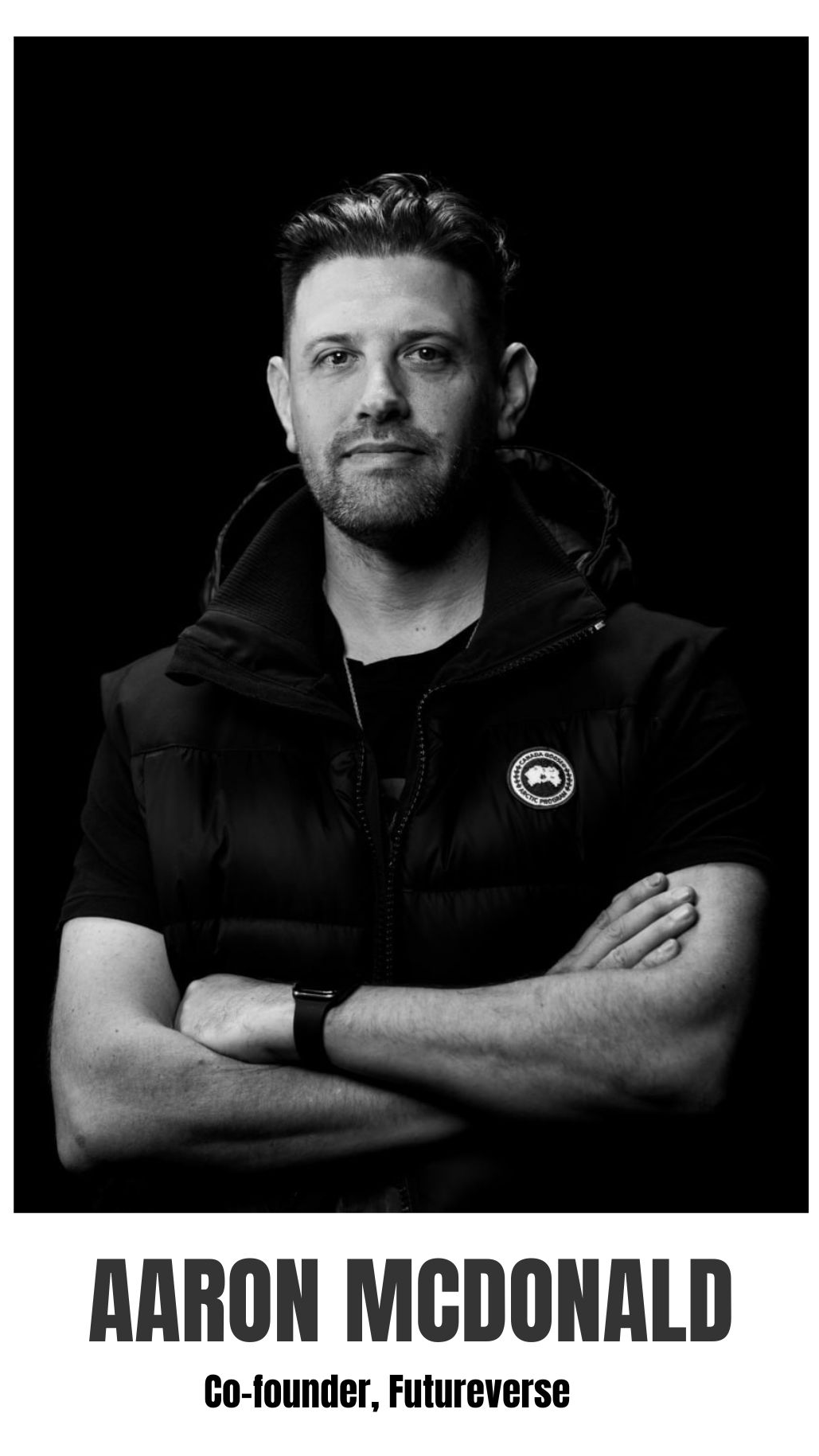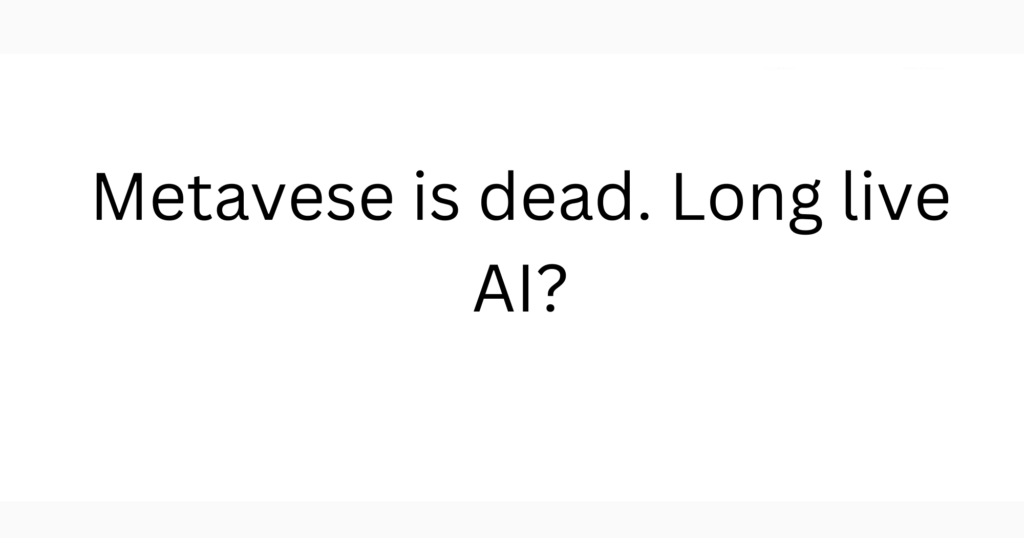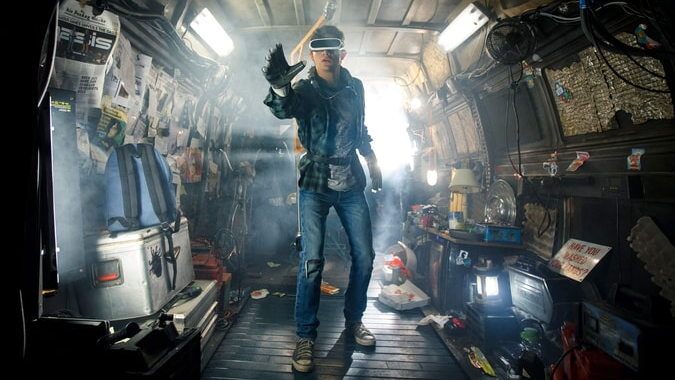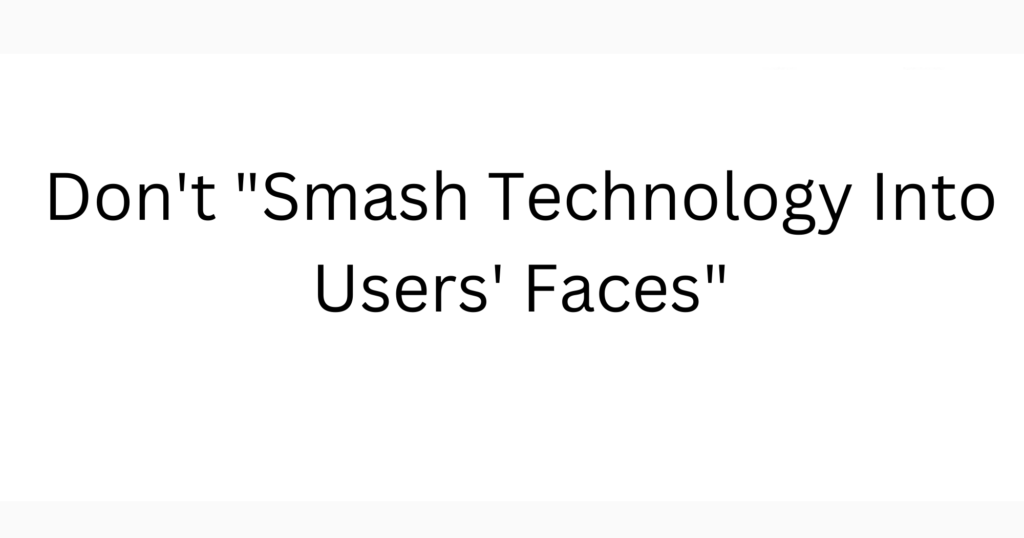A conversation between AmberBlocks and Aaron McDonald, co-founder of Futureverse, the blockchain company changing how users experience the digital world through the convergence of blockchain, AI, and the metaverse.

Aaron McDonald’s journey reads like a classic tale of a modern-day tech pioneer. Starting in telecommunications and cloud computing, he transitioned to venture capital, supporting startups, but feeling like an outsider.
This restlessness led him down the path of entrepreneurship, and in 2016, he found his true passion in Web3. “Ethereum captivated me from the start,” Aaron shared. “Building decentralized applications, owned by the community, is not just about technology; it’s philosophical.”
A deep conversation with a friend, a Swiss lawyer who was also an early contributor to Ethereum, solidified Aaron’s path. “It felt like destiny. Suddenly, I had someone guiding me into this world.”
That moment led Aaron to “Crypto Valley,” where he immersed himself in the blockchain ecosystem and began building the foundation for Futureverse – a leader in the AI and metaverse technology revolution, enabling the development of interactive and scalable open applications, games, and experiences.
To date, Futureverse has created many groundbreaking experiences in collaboration with renowned organizations, including Warner Brothers, FIFA, Mastercard, Authentic Brands Group, Reebok, and Muhammad Ali. Most recently, the company launched Readyverse Studios to bring the Ready Player One brand to the metaverse in the Web3 space.
The Spotlight is an exclusive interview series by AmberBlocks featuring industry builders discussing hot topics in the market.
Read more: Movement Labs Founder Started Project in College Dorm, Raised $38 Million

– Futureverse is famous for merging 11 companies into a single entity. That sounds like an incredibly difficult task. Can you tell us how that process went?
Aaron McDonald: Honestly, don’t try this at home! (laughs). We had built an investment ecosystem with companies that helped solve each other’s problems—a symbiotic relationship between technology and customers. Then, some VCs suggested that we roll up the smaller companies into a single entity, with the potential for exponential growth.
It was a bold idea, but it fit perfectly with our thinking. The process wasn’t easy—combining a myriad of technologies, cultures, and goals took a lot of effort. But it all paid off.
And that’s how Futureverse was born.

– There’s a lot of talk these days about the “metaverse” being overhyped. How does Futureverse define the metaverse?
Aaron McDonald: We like to say: “There are no separate metaverses; there is only one interconnected metaverse.” The metaverse isn’t a single application, but a collection of interoperable games, applications, and experiences built on a foundation of user-owned content.
At Futureverse, we focus on creating technologies for content creation and widespread interoperability, enabling anyone to build connected experiences. Instead of cramming everything into a single world, we’re building connective data layers that can exist across different worlds and applications.
If we imagine the metaverse as a single application, it’s just like a video game—and such games have existed for decades. I can say this with certainty because I’ve been around for a while (laughs).
If we imagine the metaverse as a single application, it’s just like a video game—and such games have existed for decades.
What’s new is the emergence of an “immersive internet” with widespread interoperability, similar to how browsers enable the web today. This is the metaverse we are building.
-AI is central to Futureverse’s vision. How has the company integrated AI with Web3?
Aaron McDonald: We think of AI and the metaverse as siblings. I recently spoke at a Morgan Stanley conference in China. This was around the time when AI was becoming a hot topic, and the metaverse had started to cool down. In the opening slide of my presentation, I wrote: “The metaverse is dead. Long live AI.” It was just a playful way to emphasize a point.
The reality is, every new AI technology helps build the metaverse. Moreover, the metaverse has been around for a long time. It’s not some distant concept; it’s part of the world we live in. People spend 40-50 years of their lives looking at screens. If you’re not already in the metaverse, you’re probably not part of society.
AI helps create more immersive and engaging content. It allows anyone, not just game developers, to build this type of content. It democratizes the ability to create the metaverse—something that was missing in the hype cycle of the previous iteration.
Everyone knows the internet should be more immersive because the web browser is outdated. However, no one had the tools to make that accessible to everyone.

Aaron McDonald – Futureverse co-founder
Each stage of the internet’s evolution has been marked by the emergence of tools that empower ordinary people to create content. Tools made website creation simple, and suddenly everyone could have a website.
Social media allowed anyone to become a publisher, and now each person is a media company. Mobile app tools enabled the creation of millions of apps. And now, AI is the tool democratizing the metaverse.
Take Nvidia as an example. They are a company building the hardware to power metaverse environments, enable metaverse experiences, train virtual agents, and create models for producing immersive content. Nvidia is not just a hardware company—they are a metaverse company.
-Futureverse is integrating AI into its metaverse vision. How do you think AI will shape this space?
Aaron McDonald: From the outset, we decided that AI and the metaverse are inseparable. So we’ve been building capabilities in both areas—AI technology and the metaverse.
Our goals are threefold. First, to create a protocol that allows users to own AI agents and enable these agents to interact across different applications.
Second, to develop a technology layer that allows these agents to store data, building a shared simulated world that anyone can use to create applications. Finally, tools like Jen AI and Altered State Machine empower creators to generate content and build immersive worlds.
You’re not a real metaverse company if you don’t “synthesize” AI and metaverse technologies. AI is a powerful tool for driving the creation of immersive experiences in the internet world. At Futureverse, our strength lies in interoperability.
Initially, Web3, which originated with Bitcoin, solved the “double-spend” problem. This breakthrough solution opened up the possibility of verifiable ownership of digital assets, and we are extending that principle to immersive content—virtual characters, games, and more.
Until now, owning an asset often just meant holding a receipt for something stored somewhere else. Our Universal Blueprint framework is changing this, allowing users to truly own their content and connect it to generative processes to build vast, personalized worlds.
-Copyright issues are often raised when talking about AI-generated content. How does Futureverse handle this sensitive issue?
Aaron McDonald: At Futureverse, we take a proactive approach to this. For example, with our generative music platform Jen, we spend time working directly with copyright holders.
We approach musicians, publishers, and record labels, explaining what we’re doing, showing them how they can benefit, and asking their permission to use their data to train our AI.
This ensures that our AI models are built transparently, fairly, and ethically. Collaborating with creators not only helps us develop better technology and music but also ensures that users don’t infringe on copyright and can truly own what they create.
Philosophically, Futureverse takes a contrasting view to most other companies by respecting copyright holders and training AI models with licensed or open-source data.
We focus on creating tools that serve everyone—musicians, developers, and end-users—without cutting corners on ethical principles.
-Content moderation and ensuring safety are crucial in the metaverse. How does Futureverse address these issues?
Aaron McDonald: All of our tools have moderation features built-in, as creating a safe space for users is one of the most important factors when building products in this space.
For example, with our partnership with Reebok, users can go on Instagram, chat with our AI, and share a memory captured in a photo. The AI will then turn that photo into a 3D Reebok shoe that can be used in compatible games like Roblox and Fortnite

This entire process involves monitoring what goes into the system—ensuring that nothing illegal, unethical, or harmful is fed to the AI—and monitoring the output to ensure the generated content also meets those standards.
It’s an ongoing challenge, like everything else on the internet. There’s always a push and pull between those trying to exploit systems and those actively working to improve them. However, we are building robust content moderation systems into our generative processes to effectively address these issues.

– Root Network is an integral part of the Futureverse ecosystem. Can you explain its role and the diverse token types within the network?
Aaron McDonald: Root Network acts as the glue for interoperability between systems. It enables users to own their content and seamlessly connect their digital assets across different applications.
The network is designed to simplify the registration process—users can log in with familiar accounts like Apple ID or Google—and it also supports on-chain smart wallets.
The token types within the ecosystem have distinct roles. For example, the ROOT token helps ensure the security of the layer-1 network. Meanwhile, other tokens, such as those for AI protocols, perform specialized functions.
This division ensures that each protocol operates effectively while maintaining its distinct role. It’s a calculated structure that ensures sustainability and scalability.
We think of it like this: each token has its own job, like tools in a toolbox. Having multiple tokens is not unusual—look at Solana; they have issued millions of tokens just this year!
-You often say that projects shouldn’t “shove technology in users’ faces.” How is Futureverse doing this?
Aaron McDonald: Our principle is to “make technology invisible.” Take our partnership with Reebok as an example. Users can create generative 3D shoes right within Instagram—without needing to understand blockchain jargon or complex processes.
We focus on bringing joy and ease of use while keeping the technology running smoothly in the background, without users needing to worry about it.
-Let’s talk about geography for a bit. You’re operating in New Zealand, but what is your perspective on the Web3 and metaverse market in Asia, particularly Vietnam?
Aaron McDonald: Vietnam is really interesting—a combination of talented programmers, a strong gaming culture, and tech-savvy users. These factors create a unique convergence point for Web3 innovation.
The Web3 landscape in New Zealand, although growing, is much smaller in scale. However, the government’s regulatory framework and support for startups make New Zealand a great location for innovation.
-What applications or innovations do you think will drive widespread Web3 adoption in the future?
Aaron McDonald: We’ve always believed that gaming and building large-scale communities will be powerful tools for onboarding users to Web3. If you can make the experience fun and offer something truly different—something people haven’t done before—they’ll want to participate.
And unlike many other areas, gaming doesn’t face complex issues, obstacles, or regulations. It’s a simple way for users to experience the benefits of Web3 technology firsthand.
By partnering with brands that own intellectual property people love, or sports teams and franchises with passionate communities, we can offer users something new—new types of content and valuable experiences. This is an effective way to bring the next billion users to Web3.
Half the world plays games—about 3.5 billion people. So, if we can provide them with a better, more enjoyable experience, where they truly own what they create, where they can build and shop, there’s no reason why they would choose anything else
Read more: If you need a product to assist with tax issues and portfolio management in crypto, check out CoinLedger

